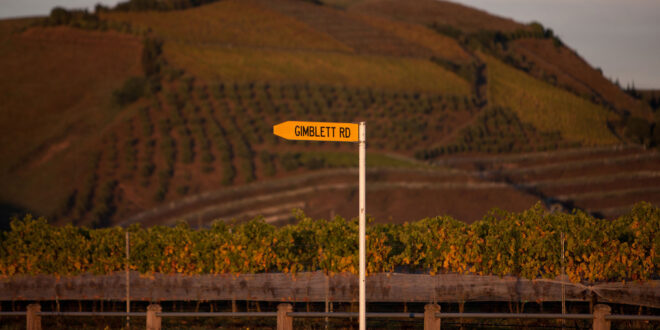Gravel. Gravelly loam. Alluvium. Hang around with winegrowers long enough and you’re bound to hear these words, often in conjunction with praise for their contributions to that elusive notion of terroir.
In point of fact, some of the world’s most lauded wines owe their particular character to gravel—think names such as Haut-Brion, Latour, Lafite, Mouton Rothschild, and Margaux.
Nature ensures that alluvial gravel soils are found everywhere around the world, but there are certain special places where their concentration and consistency coincide with the ideal climate for grapes, and in these places, magic can happen.
One of those places is the eastern side of New Zealand’s North Island. There, where Heretaunga Plains back up against the foothills of the Kaweka mountains, the vineyards sprawl in wide swaths, interrupted by small streams and hillocks buffeted by breezes off of Hawke’s Bay, in a region that has been dubbed the Gimblett Gravels.
A Trademark, Not an Appellation
It might surprise many to know it, but the New Zealand government only formally developed and legalized its geographical indications, or wine appellations, in 2016. This is despite more than 100 years of winegrowing history and a modern wine industry that has grown steadily since the 1960s.
When the government did define the country’s wine regions, they chose to do so only with a broad brush, defining a mere 18 GIs, and ignoring the many sub-regional designations that had been in place for decades prior.
Winegrowers in New Zealand have long been frustrated with the lack of clearly defined appellations in the country, which is why in 2001 a bunch of growers got together and created the Gimblett Gravels Winegrowers Association.
Like other sub-regions of the area, such as Havelock and Esk Valley, people have been referring to the Gimblett Gravels as a distinct winegrowing area for decades. Without the benefit of a governmental designation, the folks at the GGWA did the next best thing. They went ahead and defined it themselves, exactly the same way that the government might have done.
 The official map of the Gimblett Gravels Winegrowing District
The official map of the Gimblett Gravels Winegrowing District
The growers in the area sat down, argued for a long time about what should truly define the region, and then forged a consensus about the boundaries and definition of their place. Interestingly, they settled on defining the boundaries of the Gimblett Gravels strictly based on soil geology (a rarity in today’s world of highly political appellation definition).
While Gimblett Gravels® is a registered commercial trademark managed by its winegrowers association, it is managed with the same (or more) rigor as many standard appellations around the world. If you want to have the words Gimblett Gravels on your wine label, you have to have a vineyard within the boundaries of the designated region, with 95% of the vineyard area having any of three defined soil types, and 95% of the fruit needs to have come from within the district.
The “map” of the district has been drawn to only include the three types of gravelly silt and loam laid down by the Ngaruroro River and observes no other political, geographical, or property ownership distinctions, a point that the Gimblett Gravels Association likes to suggest lends something of a simple purity to their efforts. If you’ve got the soils, you’re in (provided you want to pay membership dues). If you don’t, you’re out.
There are around 1975 acres of vineyards that fall within the Gimblett Gravels zone, the vast majority of those (close to 90%) planted to red grapes, with Syrah and the Bordeaux varieties dominant.
The Annual Showcase in a Case
For the past 13 years, the winemakers in the Gimblett Gravels Association have been putting together a case of wines (selected via blind tasting by the Australian Master of Wine Andrew Caillard), to send out to journalists and critics around the world as an example of what the…
Source : https://www.vinography.com/2024/11/taste-the-stones-the-2022-gimblett-gravels-vintage-selection



